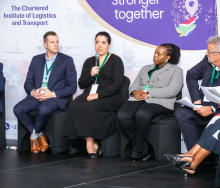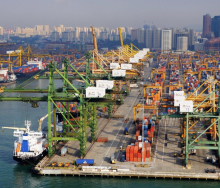The talent shortage in the manufacturing and supply chain sectors continues to be a “huge problem” for employers, even as they seek to implement new technologies that should reduce workloads.
This is according to the latest Deloitte/MHI Annual Industry Report entitled Evolution to Revolution 2022, which shows the impact of the lack of skilled labour in these sectors in the US, as firms are moving towards fourth industrial revolution technologies to run their operations.
“The talent shortage continues to be a huge problem for manufacturers and supply chains. However, it could ironically be a blessing in disguise – spurring companies to invest in innovations and technologies that not only reduce the need for manual labour, but also create the kind of advanced technology environment that today’s top talent finds appealing,” the report said.
This could provide a new path to upskilling current employees and attracting new talent, creating a more modern, capable workforce that can quickly adapt and adjust to changes in the technology and market landscape.
“Investing in workforce development and modernisation could help revive and revolutionise the supply chain industry. It could also help the overall economy, restoring the US manufacturing base and driving factories and jobs back to parts of the country left out of the booming tech and financial industries,” the report said.
According to the study, for every dollar spent in manufacturing, another $2.74 is added to the economy. And with warehouse jobs accounting for 20% of employment, restoring growth and competitiveness in the industry could boost annual US GDP by more than 15%.
However, a lack of skilled labour poses a challenge for Industry 4.0 transformations, which is forcing manufacturers to do more work with fewer people.
“With more than half a million job openings currently available, manufacturers say it is 36% harder to find talent today than in 2018. Similarly, this year’s survey results show that attracting and retaining a quality workforce remains one of the top business challenges for 2022,” the report said.
Cited in the report, Carolyn Lee, president of the Manufacturing Institute, said there was a “perception problem”.
“People don’t know the jobs are here or that these are jobs they want. Research shows the next generation is looking for careers that matter. They want to have an impact, and they want the potential for family-supporting jobs with upward mobility, all of which are characteristics of modern manufacturing,” Lee said.
According to the report, the inability to fill these open positions could end up preventing the supply chain industry from evolving and growing into a long-term sustainable solution, ultimately costing the US economy $1 trillion by 2030.
Paul Wellener, vice chairman and US industrial products and construction leader
at Deloitte Consulting LLP said: “It is deeply concerning that at a time when jobs are in such high demand nationwide, the number of vacant entry-level manufacturing positions continues to grow.”
US manufacturers expect that they will need four million jobs filled by 2030.
According to the Congressional Budget Office and Axios, the future workforce will continue to favour workers over employers, with the labour pool set to grow just 0.2% annually from 2024 to 2031. In addition, an analysis of the fastest-growing supply chain occupations over the next decade has revealed that five out of six require a skill set that spans human and technology aspects, but often do not require formal post-secondary education.
“As digital transformation in the supply chain industry continues to expand, the skills necessary for jobs in smart factories will likely be different than the skills needed today. However, today’s manufacturing workforce doesn’t possess many of those skills. And unless they can change the workforce’s skills composition, manufacturers could find up to 2.1 million jobs going unfilled between 2020 and 2030, impacting everything from production to innovation and competitiveness to GDP,” the report noted.













